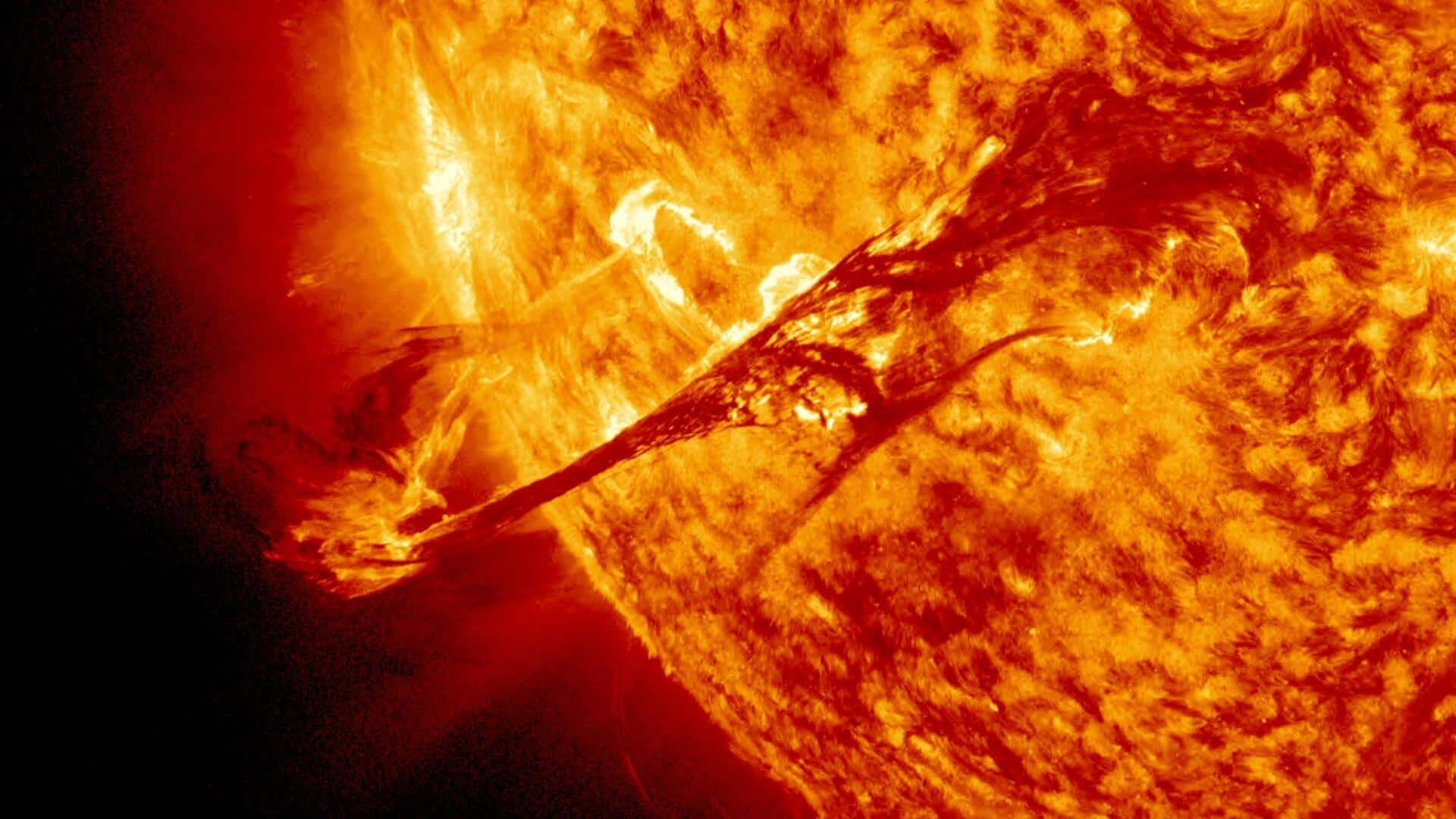
Earth may witness a solar storm tomorrow: Here's why
What's the story
On October 16, a massive magnetic filament erupted on the Sun, specifically at the active sunspot AR3467, reports Spaceweather.com. The eruption led to a coronal mass ejection (CME), which involves the release of solar matter and plasma into space. The CME is not expected to directly hit Earth but a NASA model indicates it could sideswipe our planet, possibly causing a geomagnetic storm on October 19.
Details
What is a geomagnetic storm?
Per NASA, the Earth's magnetosphere—a comet-shaped protective bubble surrounding our planet—deflects most solar activity carried by the solar wind. However, some of the charged particles can still pass through. These energetic particles cause magnetic disturbances, causing either geomagnetic storms or substorms. The CME is expected to deliver a glancing blow, meaning only part of it could make contact with Earth's magnetosphere, while the rest will pass by. This interaction can still trigger a solar storm but with reduced intensity.
Explanation
Geomagnetic storms can have both negative and positive impacts
At their best, geomagnetic storms can lead to stunning auroras. At the same time, they can also damage space weather. NOAA Geomagnetic Storm Scale classifies geomagnetic storms based on their strength. These storms are denoted by 'G' followed by a number from 1 to 5. While class 1 ranks as a minor event, class 5 is an extreme event. Spaceweather.com estimates that the incoming CME could cause a mild G1-class geomagnetic storm.
Insights
Precautions and potential effects of solar storms
Although the predicted G1-class storm is considered minor, it's essential to be aware of the potential effects of solar storms on Earth. In more severe cases, solar storms can interfere with GPS and mobile networks, disrupt internet connectivity, and even affect ground-based electronics and cause power grid failures. In addition to communication disruptions, they can cause damage to satellites. For instance, in February 2022, a geomagnetic storm destroyed 40 of SpaceX's Starlink internet satellites in orbit.